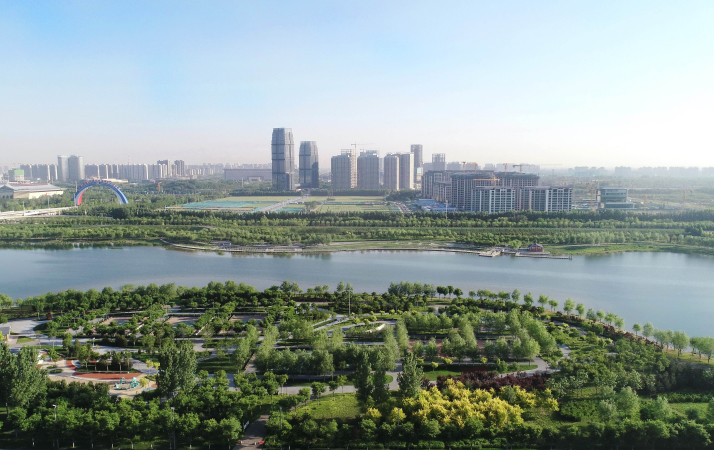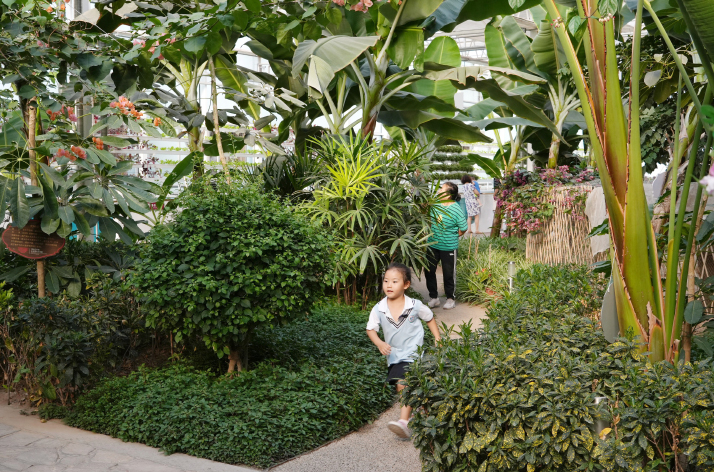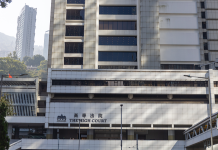
The dense branches of wild locust trees shade residents from the scorching sun in Ping’an Village of Nangang Town in Zhengding of Hebei Province. The locust tree forest has become a new hotspot for camping. However, due to drought and declining groundwater levels, the tree branches had often drooped listlessly like dead vines until 2017, the start of a restoration project for the Hutuo River, along which the village is located.
The Hutuo River, originating in Fanshi County of Shanxi Province, flows through both Shanxi and Hebei provinces before entering the sea. The main river stretches 588 km, with 205 km flowing through four urban districts and six counties under the administration of Shijiazhuang, capital of Hebei. It is the largest and primary flood control channel in Shijiazhuang and is affectionately dubbed the Mother River of the city.

Replenishing a dry river
“Hu” means roaring, and “tuo” means torrential. The Hutuo River rushes down from the Loess Plateau in Shanxi into the North China Plain. The sharp drop leads to a fierce current and frequent flooding.
Prior to the founding of the People’s Republic of China in 1949, the river had flooded frequently and in the following eight years, it experienced four floods.
In 1958, the government mobilized people to build two reservoirs on the river. These reservoirs helped regulate floodwaters, effectively mitigating the impact of rapids on residents along the river.
However, since the late 1970s, due to continuous drought in north China and the increasing demand for water for urban and rural production and domestic use, the section of the river below the Huangbizhuang Reservoir dried up for an extended period.
Due to the lack of water replenishment, the groundwater levels in the region declined, transforming certain sections of the river into dry land; and soil degradation ensued. The once-nurturing Mother River became a major source of sand storms in Shijiazhuang and neighboring areas.
Moreover, illegal sand extraction became prevalent along the river while garbage dumping and industrial sewage discharges also resulted in serious pollution, making it one of the most polluted rivers in Hebei, with urgent need for pollution control.
Shijiazhuang lies on the river’s southern bank and on the northern bank stands Zhengding, a nationally recognized historical and cultural city. From 2017 to 2021, the ecological restoration project for the Hutuo River was carried out for 109 km of the river from the Huangbizhuang Reservoir down to Shenze County in Shijiazhuang. The riverbed was dredged and the banks were stabilized, enhancing the river’s capacity to store water and handle floods.
In 2019, Shijiazhuang facilitated the first round of water replenishment for the Hutuo River through the middle route of the South-to-North Water Diversion Project, which transfers water from the Yangtze River to north China. Following the completion of the ecological restoration project in 2021, the city has refilled the river regularly with water from the Huangbizhuang Reservoir. Xiao Weiqiang, head of water management at the reservoir, told Xinhua News Agency his team conducts phased replenishment to ensure the continuous flow of the Hutuo River.
“After water replenishment, we improved the desertified land along the river by covering it with soil, retaining well-growing poplar, willow, plum, and peach trees, and growing 59 new species of landscape trees with strong adaptability,” said Zhang Yanyan, chief engineer of the Hutuo River Ecological Zone Management Center.
By August 2023, a total of 208 hectares of river had been restored and 1,076 hectares of riverbanks greened. This has resulted in the creation of a green ecological landscape corridor. The section of the Hutuo River in Shijiazhuang has been restored to its former glory, with clear waters flowing in it. More and more birds including white egrets, red-crested pochards and little swans are frequently seen along the river and the river is becoming a “paradise for birds.” The Hutuo River has yielded both ecological and economic benefits.
Thriving industries
In Zhengding, which is home to ancient architectures, such as pagodas and city walls, the reemergence of green landscapes along the Hutuo River has added vibrancy to the ancient city. The river banks have turned into a recreational haven for locals.
Thanks to rising groundwater level after the restoration project, Zhoujiazhuang Village of Quyangqiao Town in Zhengding, started to develop a rice-crab coculture system in 2019. The cultivation base spans over six hectares. Under the coculture system, rice provides shelter for crabs and improves the aquatic environment, while crabs eliminate pests and weeds, and reduce the need for chemical fertilizers and pesticides.
Zhang Ningning, Secretary of the Communist Party of China Zhoujiazhuang Village Branch, told Xinhua that rice grown under this model is sold for 20 yuan ($2.8) per kg, far higher than ordinary rice, which is sold for only 2 yuan ($0.3) per kg.
Quyangqiao has a history of rice cultivation. However, rice growing had stopped for decades in the town due to declining groundwater levels. Now it has resumed and Zhang is planning to develop rice field tourism to increase local residents’ incomes.
Tayuanzhuang Village along the Hutuo River in Zhengding is developing local tourism.
In the village’s plant factory, 66-year-old villager Tang Xiuying is responsible for taking care of the growth of lettuces. These hydroponic vegetables are pesticide-free. The factory serves as a study base for local children and a popular tourist spot.
Plant factories are facilities that aid the steady production of high-quality vegetables all year round by artificially controlling the cultivation environment including light, temperature, humidity, carbon dioxide concentration and nutrient solution.
Currently, many agricultural tourism projects have taken shape in the area surrounding the village, including smart farms, fruits picking gardens and cabin homestays. The village receives around 1 million tourist trips every year, generating a revenue of 10 million yuan ($1.4 million).
“With the improved ecology, we are trying to develop rural elderly care projects and high value-added industries such as an aerospace information industrial park,” said Guo Jianjun, Executive Deputy Mayor of Zhengding County. –The Daily Mail-Beijing Review news exchange item





